61. BALKANISED - 2: Through much of what was -twice-“Yugoslavia”: Ljubjiana to Zagreb to Belgrade:
- Andrew Foy
- Feb 8, 2020
- 22 min read
Updated: Jan 20
2 January, 2020 – 10 January 2020

In which your bemused correspondent travels southwest across Croatia and Serbia, reading a vast 700+ page history of the Balkans which colours his limited understanding of what he is seeing (or often NOT seeing for interesting political reasons), while filling in leisurely hours of comfortablish train travel and extended waits at bleak border crossings ... Assume a gradually increasing seediness of trains in comfort, cleanliness, speed, or catering (lack of); a diet of apples, leather-skinned Greek mandarins, warm juice and cold pastries, with an occasional espresso shot from dodgy station bars. What follows is stuff that happened and what I was reading at the time:
(DO feel free to skip the book extracts below if you just want the day-to-day stuff.... or anything else, really... ).
( To find the previous post of this journey, it’s at:
---------------------------------------------------------------------------------------------------------------------------
In Slovenia, the modest local history museum in the grand former palace (next to a boxy 70's Communist resort building (now rented offices) is explicit about Tito and his “partisans” committing targeted political murder to ensure that, when some form of “democratic” vote took place, he would be the undisputed leader of post-war Communist Yugoslavia. Would museums in the other remnant states of Yugoslavia be as “up-front” about events during World War II and the Communist era?
Hardly...
This became a kind of travel obsession, enjoying the food, scenery and day-to-day experiences of Croatia and Serbia and beyond, while reading a vast, sweeping, and sometimes exceptionally graphic history of the area... and seeing and hearing how a national history is “constructed” (or otherwise)...
__________________________________________________________________________________
Mark Mazower: THE BALKANS, From the end of Byzantium to the Present Day:
“From the very start the Balkans was more than a geographical concept. The term, unlike its predecessors, was loaded with negative connotations – of violence, savagery, primitivism – to an extent to which it is hard to find a parallel. ‘Why “savage Europe”?,’ asked the journalist Harry de Windt in his 1907 book of the same name. ‘Because the term accurately describes the wild and lawless countries between the Adriatic and Black Seas.’… Liberals found it hard to reconcile their happy ideal of national self-determination with the realities of a fragmented and destabilised world” …Between the wars, novelists and film-directors turned the region into a stage set for exotic thrillers of corruption, quick killing and easy crime.”
__________________________________________________________________________________
CROATIA:
6.30pm and the remnant two-coach “Mamara” Express from Villach crawls in for Zagreb: the usual European clamber-up-with-bags from a low platform into a traditional 6 seat, fogged window, compartment of largely silent passengers: more into their phones and woollens than books or papers these days... while impassively waiting for the surly border entry stamp for Serbia.
Arriving into Zagreb at night is to walk straight out from poorly-lit Hapsburg grandeur into vibrant Christmas lights on a grand scale across a broad station square (with obligatory bronze hero: King Tomislav, on bronze horse: the King, as with all heroic statues in downtown Zagreb, is decorated with a large, seasonal red neck-scarf) to an brightly lit ice-skating maze, “Bubbles” onlookers’ bar and “Winter Wonderland” playing loudly on high rotation as children and the other beginner skaters push life-sized, upright, serious-looking plastic polar bear slides for balance. It was too cold to contemplate hungrily negotiating the kilometre-long Christmas Village of little hutlets, north of the skaters, so dinner in the elegant Hapsburg era pub it was...
My first day was a public holiday for Advent - “Our Christmas holiday...” so, for my second Christmas I get to explore a largely closed city and monuments on the first of three days... then the museums.
North of the station is the traditional heart of Zagreb: the long and narrow Jelacic Square (Bronze Josip Jelacic, red scarfed, on bronze horse) with its Croatian blue “always a tram-in-sight” procession, punctuated with one preserved couple of groaning wooden Santa trams doing compulsorily jolly downtown circuits. (This all looks rather better than the portrait of the square in a Belgrade museum, with Ustace government wartime executions hanging from filigreed span poles as trams operate under them to the suburbs during the early 1940’s...).
Above the city square is the hilltop of the original medieval (Catholic) church settlement with its cathedral, palaces and museums and tenements. Beyond them are the more recent, hilly and well-heeled northern suburbs.
South of the railway is the Tito government’s 1946 planned Communist utopian city of bland, broad, empty-of-private-traffic boulevards of high-rise apartments surrounded by bare parklands and industrial complexes, now relieved by shopping malls, casinos, traffic and freeways.
__________________________________________________________________________________
Mark Mazower: THE BALKANS, From the end of Byzantium to the Present Day:
“Wartime under the Ustace led by Pavlich: (granted control after Italian mentoring and Nazi takeover of Pre WWII Yugoslavia):
The terror in Croatia (which now included Bosnia and Hercegovina) was directed against the usual targets of a fascist party - Jews, Gypsies, homosexuals and political opponents of the Ustace. But Pavlich was also determined to “solve” the Serb question in Croatia: a third of the two million Serbs in the NDH would be expelled; a third would be assimilated through conversion from Orthodoxy to Catholicism; and a third would be killed. With such a range of potential victims, the Ustace leadership tried to simplify its policy of mass extermination wherever possible... The Decree... in defiance of the Fuhrer’s explicit disapproval, redefined Croats, who, according to all ethnic criteria, were Slavs, as Aryan... Serbs were instead stigmatised instead on the grounds of culture and confession... as “Eastern Greek”.... The leadership wanted to make sure that Serbs with money and education did not survive the planned genocide...
The Ustace lacked significant popular support... To staff his genocidal machine, Pavlich ... turned to Croatia’s lumpen class. The collection and concentration camps of the NDH were poorly built, atrociously run and extremely unhygienic.”
__________________________________________________________________________________
So: trying to find Croatian history from the 1940’s up until today...
The city museum was very strong on the Roman, Byzantine, Ottoman, Medieval and more distant religious histories of the city, great on pre-war social history, but it mentioned the Ustaše, only once, in passing, about anti-Jewish policies. (Suitable poster display, though). There was nothing about persecution to resolve the policy to neutralise expansionist “fifth column” Serbian minority: that one-third of the Serbian minority were to be killed, one-third expelled, and one-third converted to Catholicism and assimilated as Croats. Not mentioned. Not relevant. Apparently.
The Reception staff suggested that I go to the Croatian National Museum. This was mightily impressive about ancient social, religious and imperial origins of Croatia but due to “lack of room” all references to World War II and the collapse of Yugoslavia had been removed “about 2 years ago”.
The counter staff suggested I try the Museum of Contemporary Art, perhaps???? It is in the bleak, Communist model-city south of the station.
While searching for this museum I did sight a modest suburban memorial to deaths of local residents in the 1990’s, in passing, from the local tram, with a spectacular modern glass and steel Catholic church at Ferenscica.
A simple brown pillar in a small park, surrounded by scattered candles in red glass containers and emptied concrete ponds appeared to honour Croat Nationalists who died fending off Serbia’s attempt to hold on to Croatian lands as part of an enlarged Serbian nation.
A cold walk back to the junction to find a connecting tram was improved by an adolescent juggler, working the traffic lights at Drziceva, his two “acts” perfectly timed to collect hat money before the green light. Sealed tram windows did not assist donations...
The Museum of Contemporary Art was suitably brutalist, with some post-1990 responses to political life: a human body laid out on a table set with plates and cutlery for its degustation, paired boxing gloves (one with hammer and sickle, the other with red star), a determined red-flag waving socialist-realist figure contrasted with small painted heroic images of Mickey Mouse.
Back in the Old Town, the memorial to the Serb missile attacks on Zagreb was closed for the religious holidays.
__________________________________________________________________________________
Mark Mazower: THE BALKANS, From the end of Byzantium to the Present Day:
“In the postwar era, some of the clichés became less powerful. The Balkans disappeared from Western consciousness during the Cold War, and the Iron Curtain ran through southeastern Europe, separating Greece from its communist neighbours. Albania became virtually impenetrable. Tito’s Yugoslavia was idolised by American policymakers and by the New Left in Europe; … Ceaucescu’s rule in Romania was known more for its pronounced anti-Sovietism in foreign policy than for its extreme repression of its own population… Mass tourism brought millions to the regions’ beaches and ski-slopes., and turned peasant culture into after-dinner entertainment. The picturesque replaced the violent, and the worst problems most tourists anticipated were poor roads and unfamiliar toilets.”
__________________________________________________________________________________
The “Images of War Photographic Museum” is small but emotionally gripping, ensuring that photographers from both the Serb and Croatian forces are represented, as well as international press photographers. As an anti-war memorial it is direct; confronting and upsetting... lines of men being forcibly marched from their villages... to where??? (military unformed guards proudly posing for the photographer); a seemingly banal picture of a woman lying dead on the main square pavement having been hit by shrapnel while casually disembarking from her morning tram, almost as though she had just tripped on the gutter in her spotless black high heels...
One caption:
“A Serbian paramilitary, who I was standing shoulder to shoulder with, grabbed and pulled a man out of this very line of people. The Croatian man looked like he was in his 40’s just wearing a tracksuit. Without saying a word, the Serbian paramilitary fired around 20 rounds from a range of only about 3 meters directly into the chest of the man in the blue tracksuit. The Serbian man turned directly to me and stared into my eyes, eyes that said, ‘What are you going to do about that?’. No, I did not press the shutter – out of fear for my own life. Thirty minutes later, I went and photographed the man in the blue tracksuit. The streets were littered with countless executed men, Croats who survived the siege only to be executed by people that were once their neighbours and friends.
- Christopher Morris”
Another:
“My first day of school (I am the one in the bottom left). As a child from a mixed marriage from that day on, my teacher continuously asked me in front of the entire class whether I am a Serb or a Croat and what “nationality” shuld be used to fill out my school report. In the meantime, the Yugoslav nationality that my parents had chosen for me in the previous census had ceased to exist as an option. - Jelka V.”
Another: Accompanying a photo of a full bus of bowed male prisoners supervised by one uniformed paramilitary:
“Exchange of Serbian and Croatian Prisoners. Servas, August 14, 1992
Durong the prisoner exchange, the Croatian prisoners on the bus were forced to keep their heads down and sing, “Who is saying, who is lying that Serbia is small”.”
After an hour here, the receptionist suggested I might “enjoy” the Yugoslav National Museum in Belgrade.
In this town, for “Yugoslav”, read “Serb”.
__________________________________________________________________________________
One museum to genuinely enjoy is “The Museum of Broken Relationships” where donated items are labelled in reflective, regretful or hilarious labels. “Unlike ‘destructive’ self-help instructions for recovery from grief and loss, the museum offers the chance to overcome an emotional collapse through creation: by contributing to the museum’s collection”:
“The Toaster of Vindication: 2006 – 2010 Denver, Colorado, USA
When I moved out, and across the country, I took the toaster. That’ll show you. How are you going to toast anything now?”
“Very Old Racing Bike: 16 years Itterbeek, Belgium
He left it there… for me
That rickety road racer.
He had bought himself a new bike,
And there was no room in his ‘new life’ for the old one…
I looked it over,
Tried it out,
Bought special clipless shoes
And raced it round Pajottenland to chase away the blues.
Last week I bought a new one, thinking what the heck,
A carefree singleton like me has no use for that old wreck.”
---------------------------------------------------------------------------------------------------------------------------
While wandering back down through the old town towards the massive cathedral, the cobbled laneway took a sharp left turn into three worn church pews in an arched basement, facing a small saints’ shrine bedecked with flowers and candles, with fervently praying locals, before another sharp turn into a narrow street towards crass souvenir shops.
In a low-key election on the same day, Croatians voted to change Presidents Against the populist Central European political tide they turned to a new left-wing leader.
__________________________________________________________________________________
Mark Mazower: THE BALKANS, From the end of Byzantium to the Present Day
“Under Tito, tensions between the Republics were settled at a federal level of the state and party apparatus. Even before his death in 1980, strains had been apparent in both Belgrade and Zagreb as nationalist currents emerged among party cardres… But after Tito’s death, the federal leadership, weakened by the protracted economic crisis, was less successful in balancing the competing claims of different nationalities. With the rise of Serbian nationalism in the mid 1980s, the system began to break down…
…Even before the collapse of communism, Milosevic began to reassert Serb power.
His policies were originally intended to bolster Serb influence within Yugoslavia. But as the federation’s republics broke away it became clear that what Milosevic was fighting for was not Yugoslavia but rather a creation of a Greater Serbia … …At the Decade’s end…. NATO went to war with Serbia to carve out a separate self-governing territory for the Albanians in Kosovo. By 1999, the borders of the Republic of Serbia were almost back to where they had been in 1878… Milisevic had failed; his sole success was that he retained power in Belgrade.
The use of mass expulsions to ensure permanent ethnic domination had been the goal of Serb policy in in Bosnia after 1992; it was feared to be Serb policy in Kosovo too six years later. Historians read such policies back into Europe’s past.”
Mazower’s book presents this as merely a continuation of the violent ethnic and religious cycles of Balkan history over a thousand years...
__________________________________________________________________________________
The Esplanade Zagreb Hotel was built to accommodate passengers from the Orient Express in suitable Belle Epoch comfort on their overland journey from Paris to Istanbul. It provides an luxurious diversion on the walk back to the graffitied austere reality of today’s Croatian railways...
The train to Belgrade roared in from Lubjiana, massively graffitied from the waist down (surrounded by even more massively graffitied local diesel trains) so at least the windows were clear if not clean. There was air conditioning, and the back-to-back seats were comfortable enough, but no lock on the toilet door. So, to “stand and deliver”, one foot wedged the door shut, the other foot was near the bowl as one tried to “aim straight” in the bouncing train, striving to ignore the cluster of second-hand pubic hairs on the underside of the toilet seat.
At least there was soap.
“Lunch” was pastries from the supermarket next to the “Images of War Photographic Museum”, fruit and lamingtons “borrowed” from the hotel breakfast buffet, and suspect mineral water from the toxic remnant Zagreb station bar (the large station buffet was long gone...).
The advice, as you travel eastwards, is that the trains or tracks would become more decrepit, land border crossings would become reminiscent of Europe prior to the Schengen or Euro… with the dubious official charm of former Communist bureaucracies… always at scrappily, small and lonely, or else crumbling grand, stations (depending on where and how and when borders might have wandered over the last century or so). Always there is that hesitant, tense, silent, interminable wait for officialdom in carriages that have lost their locomotive, and air conditioning/heat, and all but reserve power.
Following a pleasant afternoon of travelling sedately between distant villages in increasingly sunset hues with white churches cresting each village... at the Croatian border in Tarnik we had been silently looking across a few flat kilometres of icy ploughed fields towards huge concrete grain silos on the horizon. Formalities completed, suddenly the train jerked into a slow roll towards those same silos which marked the Serb border, to sit patiently for more passport stamping, engine changing and a slow roll of 500 metres into the station platform where the train was boarded by a singing adolescent football team, commuters for Belgrade and the sudden, welcome appearance of a coffee cart: short blacks in tiny, wobbly, clear plastic beakers.. Welcome to Serbia!
---------------------------------------------------------------------------------------------------------------------------
SERBIA
Belgrade - Centar Station:

The Night Before Christmas... No Room at the Inn (if you can even find it!).
January 6th: Epiphany to some (such as the Catholic population of
Croatia), Christmas Eve to others (such as the Orthodox population of Serbia). I was anticipating a few taxi hassles from the remote new Centar station in Belgrade. I’m glad I arrived early: it was a bit of a night!
1. The new Central/”Centar” station (replacing a grand Hapsburg edifice in the city, now becoming preserved part of a semi-demolished waterfront development) has all the architectural charm of an incomplete concrete slab dropped over a wide drain. Think: New York’s Penn Station without the style, awaiting for Madison Square Garden to be plonked on top, Hurstville station without the lively community, Federation Square tunnels without the vibrancy.... It’s waiting for the high rise something (including actual passenger-friendly facilities) to be built on top. Do not follow the ambiguous EXIT signs up the stairs, you’ll push through blue doors into the police station and be swiftly ordered out.
2. “INFORMATION” is eating her dinner and doesn’t provide any: not even a basic map of town. So it’s back down the steps to find some way out of this cold concrete maze. The recently arrived express from Ljubljana and Zagreb has wandered off, as has any obvious human life. There’s an elevator at the end of the platform. This whisks you straight out on to a barren, sleety taxi rank. There’s a vacant bus stop with signs in fluent Cyrillic. There are no taxis. There are no taxis for more than half an hour. Perhaps “INFORMATION” has finished grazing and might assist, so it’s down three flights of poorly lit concrete fire-escape stairs (this is the main entrance to the main station, under a perfunctory plastic canopy and sign). “INFORMATION” flick-passed me, with two equally bemused, cheerful Danes, to “International Bookings” who said there “might” be an occasional bus to the old station, but it’s not where I need to go. The steady stare and silence suggests that this is the end of the interview, so back we up three flights of concrete fire escape stairs we go, the Danes heading southish, they think. A taxi appears: the Danes pounce and go. No other hint of yellow light appears in the silent, bleak, empty roadway....
3. Thinks: I printed out an English transit map before I left home... noticing passing trolley buses on an over bridge in the far distance.... Find it: the number 41 will take me down town (with no small change for fares/no travel card/a basic phrase book - so useful in the dark - and no street map: could be interrrrresting.....). I throw myself onto the mercy of the driver who can’t take large banknotes but does recognise another foreign victim of new Centar station arrival.
4. It’s actually a brilliant drive through Christmas lights along the foreign embassy area and past the grand parliament and vast post office buildings (and camped ex-soldier protestors from the Yugoslav wars in the damp park across the road from the all of grandeur). I’m not enjoying the sight-seeing so much....
5. “This is close,” yells the trolley driver as he bundles me out at Republic Square, which is full of new-year-celebration construction behind which are brilliant cascades and arches of lights lining the pedestrian plaza, but to where???? I have no street map, signs are in helpful Cyrillic, and I don’t know how close is “close”, and to what... but there is a swanky hotel across the road, and concierges have street maps. For the second time tonight, I throw myself onto the mercy of a complete stranger (I’m getting good at this)... and the uniformed concierge wearily goes online, prints me a walking map, hands me a detailed city map, and watches me closely from the gold doors to ensure I am turning right at the Hotel Moscow (the Gestapo HQ in WWII by the way) towards my pub.
6. Pub. Actually part of a floor of a Hapsburg era apartment building up three very long flights of bag/carrying stairs. I have arrived!
7. And it’s locked. Very closed and very locked, with the empty Reception desk only a metre away through thick glass. There’s an incomprehensible sign with some codes on the door, a non-working doorbell, inert pager.... one knocked, one tried to ring, one hammered on the glass. One was beginning to feel the joy of travel ebb away on a grubby Hapsburg landing outside a thick brass ‘n glass door. One noticed the pub’s wifi codes were on the door. One groped for one’s appliance and sent urgent messages to Booking.com and to the hotel (my email, sent last night - as required - with anticipated arrival time; presumably had been received....?). More thumping on door for a quarter hour. And no one was stirring, not even a rodent... then back onto the Booking.com website map to find likely other local contenders. Some appeared to be in a convenient lane way beside/behind this building so, back down three elegant flights of stairs lugging the bag...
8. The laneway was actually a muddy slippery, sloping park with many more stairs, landing straight into the commercial sex and gambling club scene... not a good place to be wheeling a bag with train-lag looking for a bed-not-by-the-hour.... so back up/out of the muddy lane and into the doorway of a genuinely welcoming (Booking.com recommended) 4 star hotel, with gorgeous gal on reception, really looking after me as I was half of the night’s guests... “Best Credit Card Rate”! Hang the expense, hand over the card: I needed shower, clean clothes, dinner, vino, sleep... after sending a series of more “refreshingly direct” messages to the locked pub and Booking.com.
9. The recommended Serbian cuisine restaurant up in the festively illuminated pedestrian zone was one of the few places open (apart from dodgy cvepapi bars and Turkish takeaways and suspect mulled wine and chestnut stalls. I was just beginning to feel I might eventually quite like Belgrade, although everything would be closed for Orthodox “Christmas” tomorrow (so, as a hater of The Season I’m now enduring two of them...). Self-guiding the city on a BusPlus card looks the go.
10. And compliments of the season (whichever one you are in or just had) to you all... and do stay safe!
__________________________________________________________________________________
Misha Glenny: The Balkans 1804 - 2012: Nationalism, War and the Great Powers:
“The First Serbian Uprising began over half a century before the unification of Italy; the first modern Greek state was proclaimed forty years before the unification of Germany. But the national identities of Serbs and Greeks were ill-defined. Both national movements owed their success more to Ottoman decay than to their own inherent strength. To compensate for their political and economic weakness, their national elites sought support for their aspirations from the European powers. Herein lies the start of the Balkan tragedy - these were peasant societies poorly equipped to assimilate ideas of the Enlightenment, and located at the intersection of competing, absolutist empires. The result was a stunted constitutional development whose shortcomings would inevitably be exploited by the great powers as competition between them intensified in the region in the second half of the nineteenth century.”
__________________________________________________________________________________
Belgrade has a massive Ottoman-era fortress fronting the confluence of the Danube and Sava Rivers, protecting the original hilltop, walled, inner-city, a large old 19th/20th century Hapsburg/Yugoslav city spreading south and east with elegant squares and mid-century-elegant shopping cross-streets with massed trolleybus wires, massive Orthodox churches, Art Nouveau public buildings featuring vast nude statuary over grandiose entrances, and older tenement housing that had escaped Nazi bombings. Across the Sava River, to the north west is “Novi Beograd” which has been a gritty port and industrial area, now being redeveloped as a planned city of broad avenues and apartments (of which Tito would be proud) mixed in with classy shopping malls and up-market high rise areas, in new suburbs with inspiring names such as “Blok 45”.
This is all bound together by several spectacular high bridges, boulevards and express tramways, with their donated yellow or dark green Swiss trams carrying large signs: “With Greetings From Basel!” as they grind past slick new snaky articulated Spanish LRVs and boxy Communist-era-patriotic-Serb-red-and-blue trams... through the inner city to the more traditional south eastern suburbs.
The pedestrianised downtown streets are an Orthodox New Year fake-log-hut Celebration village: more mulled wines, lights and tasteful souvenirs, with rather less celebratory graffiti in the back streets...
Lining the streets in the suburbs are well-established “Quality Second Hand” clothing stores, significantly outnumbered by classy looking “Slot Clubs” and other glossy gambling emporia. These grow in number and desperation as you travel east into Bulgaria.
__________________________________________________________________________________
Misha Glenny: The Balkans 1804 - 2012: Nationalism, War and the Great Powers:
Regicide: Serbia, 1903
“In Serbia... King Aleksandar soon began to display his father’s arrogance.... However he had a fatal weakness for Draga Mason, a lady-in-waiting to his mother, who, ten years the King’s Senior, exerted a powerful maternal-sexual influence on him... Not one, but several, men of high position, ministers and generals, told him to his face of Draga’s past. One told him that he had had Draga himself for a not excessive amount of money... Draga’s greatest error was to persuade her husband to purge the military... to insult the Serbian officer corps hatched one of the most notorious conspiracies in Balkan history.
At 2 o’clock in the morning of 11 June 1903, Lieutenant Peter Zivkovic pushed open the thick oak door to Belgrade’s royal palace from the inside. Dozens of young officers swarmed the courtyard and were confronted by the palace guard... When they reached the main bedchamber, the sheets were still warm. The royal couple, however, was nowhere to be found. The soldiers had been combing the building for an hour when an officer noticed that behind one set of curtains in the bedchamber was no window but a wooden panel. With a gun at his head, the King’s adjutant called upon his master. ‘Can I depend upon the oath of my officers?’ His majesty enquired. ‘Yes,’ came the reply in unison. As the secret door opened, the officers opened fire and killed Alexandra. Queen Draga collapsed dead on top of him. The soldiers were not finished, however. Drawing their swords, they slashed and mutilated the two cadavers before hurling the remains out of the window. This was the ignominious end of the Obramovic dynasty”
__________________________________________________________________________
The number 41 trolleybus was becoming my new best friend (especially now, with a pre-paid 4 day bus pass negotiated in fluent mime from a local kiosk), as the Serb Railways website English tab was as “useful” as INFORMATION had been at Centar station... where, regretfully, I needed to return to find out about eastbound trains.

This time, after I tramped back down the fire escape stars and along a mightily impressively multi-graffitied grotty Communist-era local train, INFORMATION was well fed and genuinely helpful (and I needed to leave one day earlier to enjoy a leisurely daylight trip across Serbia towards the Bulgarian border), AND she pointed out that the YUGOSLAVIAN MUSEUM, was two more stops away on the 41 trolley. (Two trolley stops can be a long way in Eastern Europe, wait for the bus.)
So here is your free tour of the Yugoslavia Museum in Belgrade (so you don’t feel that you will need to do it): largely a collection of all-things-Tito, from original Workers’ Movement flags to graphic World War II atrocities which were suitably punished by the heroic Partisans (somehow missing from the museums in Croatia), a lot of airbrushing of Tito’s own extremes in order to become the “democratic” leader of Yugoslavia.... and his personal belongings and gifts scattered between glass cases folk art and other cultural displays, including over printed pre-1918 Serbian stamps with post world war I “Democratic Republic of Jugoslavia” superimposed in contrasting green ink - and 1939 “Jugoslavija” airmail stamps with the Nazi “SERBIEN” superimposed in 1941...
If you were hankering to see a collection of Tito’s hats and (more than a few self-nominated) awards, walking sticks, hats, shoes, cameras and kitsch gifts such as a metre high Roman-style amphora with Tito’s black and white photo portrait plonked on the sides, then this is definitely your “territory”, along with tasteful personal items such as the framed Richard Nixon and family with deeply sincere thank you message, an autographed (later) Mae West LP record... There’s’ enough Marx and Lenin sculptures, models and various propaganda posters covering the full time of the regime to please the fans, along with a couple of the mass produced “pensive Tito” bronze larger-then-life monuments which used to feature in every Yugoslav town and city square, along with Socialist realist statuary of overly-endowed naked males in some kind of ambiguous frolicsome wrestle.
Beyond this walk and the souvenir/coffee shop is the “House of Flowers” where, centred around the Graves of Tito and his wife (one third the size of her husband’s), surrounded by photos of the funeral, re-creation of the Marshal’s office where he greeted foreign dignitaries and respectful photos of his life and times. The “mausoleum” effect of other dead Soviet leaders isn’t replicated here: there are a few relaxed looking guards and you are free to wander, including over the gravel up to the marble tomb itself. If Serbia did Presidential Libraries, this would come close.
Displays about what occurred after the Tito era are, shall we say, a tad incomplete “as some parties would not donate to that Tito Museum”, so a scatter of election pamphlets and a few photos of Milosovic have to do.
It was wonderful in a slightly disorganised and vaguely reverential way. The top-of-stars exit has a broad view of Communist planning: identical high-rise apartment blocks, softened by years of vegetation to be surrounded by icy parklands, a largely empty boulevard apart from a cluster of trolleybuses, and a kiosk at every bus stop with a tiny window (to keep the solo occupant warmish inside) to exchange money for racks of small items gestured at at through thick glass.

__________________________________________________________________________________
Those of you who know the disorganised craziness of the assassination of Archduke Ferdinand which triggered World War I in Sarajevo, will appreciate that the Serbian Government Immigration Office in Belgrade is in Gavrilo Princip St.
__________________________________________________________________________________
The hotel in Belgrade which DID welcome me, could not, sadly, provide me with a refund if I left one day early. On my first night registration, I’d paid the lowest possible, non-refundable walk-in (actually “stagger-in”) rate, it seems… Receptionists (in this case, especially, the hyperactive young night-manager who made me his “project” for the last day or so) tried to get this reversed, but “Manager-Says-No”... so for the last 24 hours in the place, a full evening meal and packed lunches were free, breakfast became all-you-can-eat a la carte (excellent grilled-vegetable omelettes), and room service arrived at unexpected times with fruit and fresh honey cake. I don’t think that the other 5 guests (seven-foot-tall Bulgarian basketballers drowning in clashing eau de toillettes) were getting quite the same treatment.
The vast sourdough/grilled-chicken/buckets of mustard lunch with sour cherry juice (fortunately not the local brand of cola drink: “Cockta”; “Cockta Free”) for the train to Nis was the final triumph.
__________________________________________________________________________________
Belgrade to Sophia with an overnight stay in Nis, Eastern Serbia on three s-l-o-w t-r-a-i-n-s... :
On the advice of the Ljubjiana station booking officer (who gave me a kind of old-fashioned look when I asked about travelling overland into Bulgaria) I took the recommended the three all-stops (sometimes just picking up lurking passengers at level crossings) trains if I wanted to enjoy the scenery, “because no expresses until June”.
INFORMATION at Centar station laughed uproariously at the request to book seats: “There WILL be NO problem...”
On departing Belgrade, it’s soon evident that every major bridge and tunnel has its own substantial and well-maintained concrete/stone/brick guard building with pillbox gun emplacements and occasional turrets: a testament to past security paranoia and war. There are also the empty/crumbling guard/watch houses at the entry to every railway yard, now largely abandoned (as also seen in Romania, Hungary; Croatia) no longer required in a nation at peace where centralised menial job-creation full-employment is no longer guaranteed. Rail yards also include lines and lines of abandoned passenger carriages and some steam and diesel locomotives from another era, now being quietly cannibalised for spare parts or just left to rust in the undergrowth).
Occasional burned-out railway buildings are outnumbered by better-maintained two-storeyed station houses, each with its station master standing formally, holding a furled red flag as we arrive, covered at speeds between 15 and (occasionally) up to 50kph for the 201 kilometers in more than six i-n-t-e-r-m-i-n-a-b-l-e hours, as shown on the fancy digital indicator in the spotless, very new and very empty 2nd class electric train, which also endlessly scrolled an English “WELCOME” onto the digital information screen, along with our “speed”. It seems the quality of train far surpasses the quality of track on this old main line route of the Orient Express as it passes through scores of small villages with ridge-top churches and occasional dire, abandoned industrial enterprises and patchy snow on ploughed fields.
__________________________________________________________________________________
Nis:
Pitch dark at 7.30pm and the map is a bit indistinct. The taxi driver couldn’t locate my guesthouse... (He parked the cab and we wandered, checking front gates until he found the right door: that’s service).
I am the sole guest and a table is booked for me to enjoy local food and wine at a restaurant in the next street (a massive stuffed pork loin and equally massive tomato and cucumber salad, as always...).
I’m told that it’s a short walk between local trains at the Bulgarian border tomorrow afternoon, then a slow wander into down town Sofia by 7pm.

There will be plenty of time for me to explore the Ottoman Era fortress, mosque and hammam, Roman ruins and reinstated historic statues after Communist monuments were removed....) tomorrow, before walking down to the 11.30ish train to Dimitrovgrad.
Will let you know....






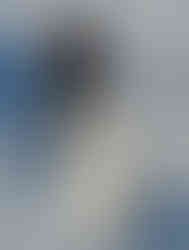







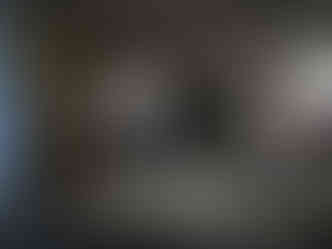




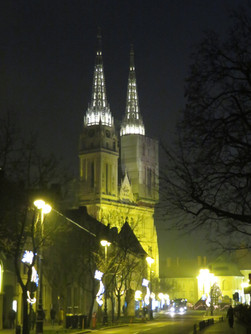














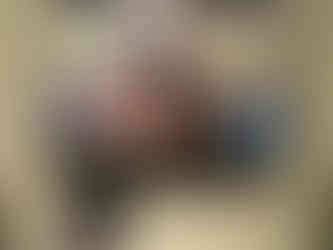










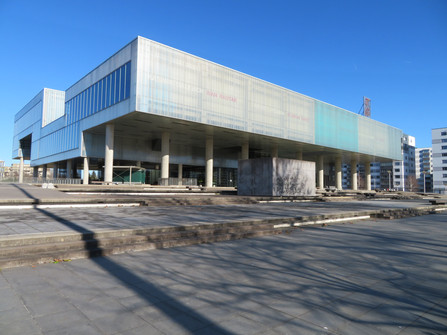




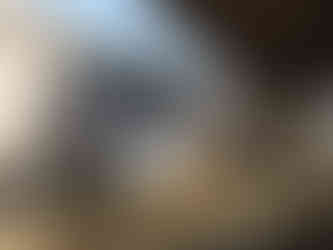


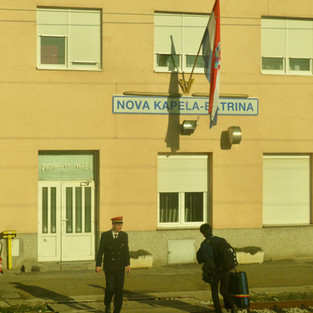
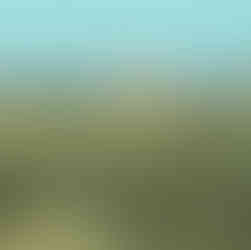






















































































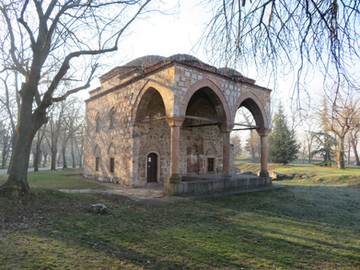









Bình luận